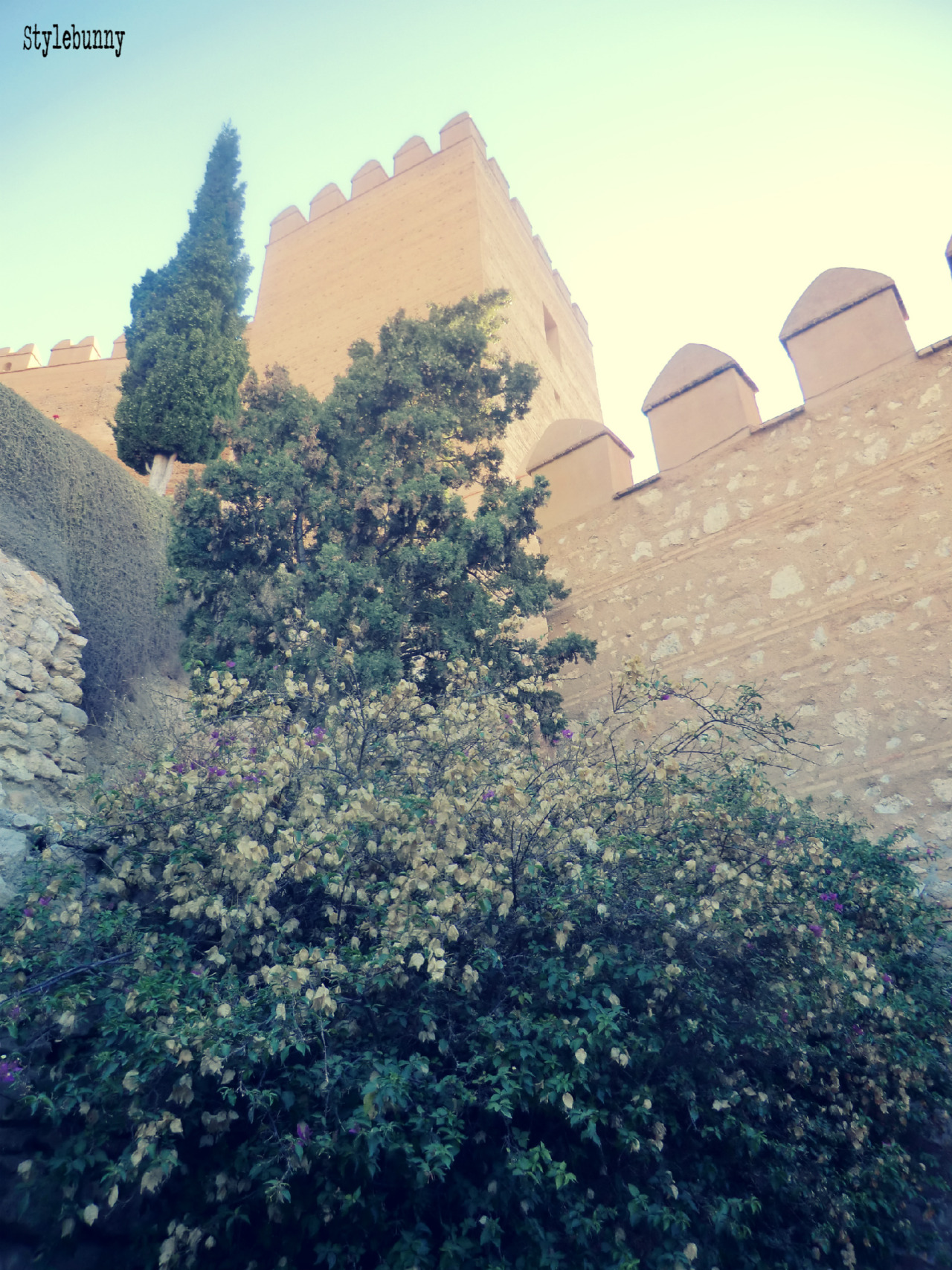
Decidiamo di non poter partire senza aver visitato almeno una delle attrazioni di Almeria, così dedichiamo la mattinata all'Alcazaba. E per fortuna, perché è una delle cose che ci piacciono di più del viaggio! Bisogna dire che siamo anche abbastanza fortunati da vederla in condizioni privilegiate: gratis, in quanto cittadini europei, e quasi da soli perché ci siamo andati molto presto.
We decide not to leave without visiting at least one of the attractions of Almeria, so we dedicate the morning to the Alcazaba. And we are lucky, because it's one of the things we like the most of our trip! We are also lucky enough to see it in privileged conditions: free, as European citizens, and almost alone, because we went there very soon.
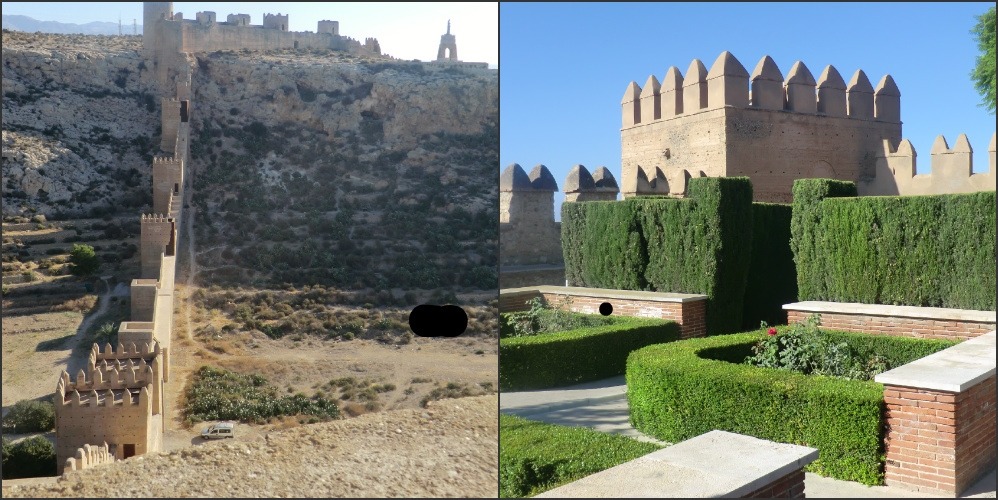
Alcazaba è un termine che deriva dall'arabo e significa "mura fortificate". La costruzione di quella di Almeria è stata iniziata verso l'inizio dell'anno mille. La prima cosa che ci colpisce è l'aspetto da fiaba, con mura merlate, giardini da sogno, panorami mozzafiato, pergolati ricolmi di grappoli d'uva e gatti, gatti dappertutto.
La seconda cosa sono le sue dimensioni. La parte che stiamo visitando è immensa, poi ci affacciamo dalle mura e scopriamo che tramite un camminamento fortificato si collega alla collina di fronte su cui c'è un'altra struttura simile.
Alcazaba is a term that derives from the Arabic and means "fortified walls". The construction of Almeria's was started at the beginning of the year one thousand. The first thing that strikes us is the fairy tale appearance, with crenellated walls, heavenly gardens, breathtaking views, pergolas filled with bunches of grapes and cats, cats everywhere.
The second thing is its size. The part we are visiting is immense, then we look out from the walls and discover that it is connected trough a fortified way to a hill iwhere there is another similar structure.
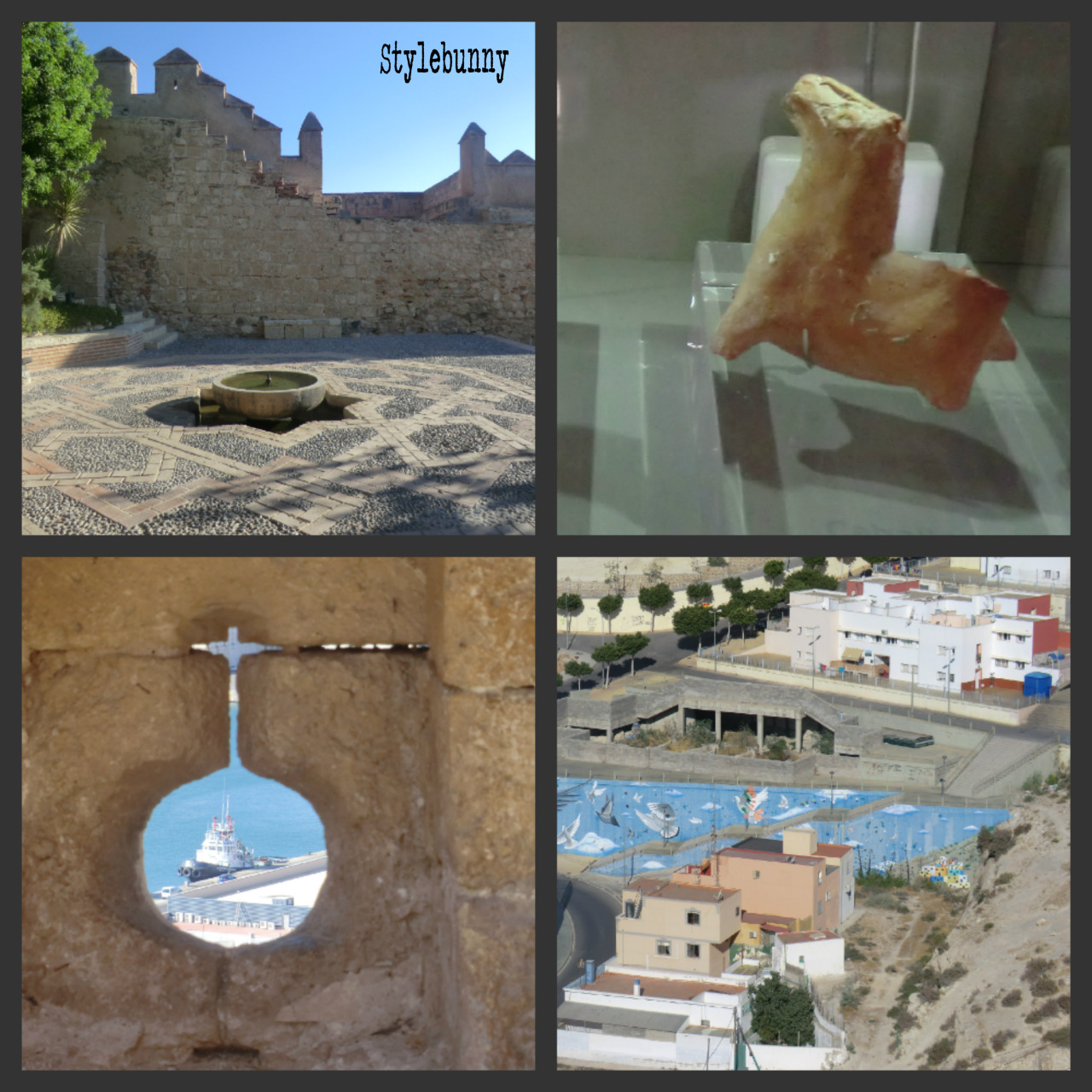
Almeria nel medioevo raggiunse il massimo sviluppo come più grande città portuale del dominio arabo. L'Alcazaba è composta da tre parti, due originali arabe e una posteriore cristiana, aggiunta a fine 1400 a seguito della conquista della città.
All'interno della struttura, vicino alla zona dedicata a scavi archeologici tuttora in corso, c'è un piccolo museo dove viene illustrata la vita quotidiana ai tempi degli arabi. E' molto suggestivo, ma quello che ci piace di più sono i giochi dei bambini, in particolare le statuine a forma di animali che venivano loro regalate in occasione delle festività religiose.
La parte cristiana si integra abbastanza bene con il complesso precedente, anche se si nota che la struttura è stata adattata a necessità belliche più moderne, come testimoniano la torre dei cannoni, da cui si gode di una vista stupenda, e le palle in pietra sparse per il cortile interno.
Visitiamo anche il museo d'arte ricavato in uno dei torrioni, ma ospita solo poche fotografie non particolarmente entusiasmanti.
Almeria reached its maximum development in the Middle Ages as the largest port city in the Arab domanin. The Alcazaba is composed of three parts, two originals Arab ones and one Christian, added at the end of 1400 after the conquest of the city.
Inside the building, near to the area dedicated to the still in progress archaeological excavations, there is a small museum which depicts the everyday life at the time of the Arabs. It is very suggestive, but what we like the most are the children games, in particular the statuettes in the shape of animals that were given them on the occasion of religious festivals.
The Christian part fits quite well with the previous complex, though the structure was adapted to the modern needs of war, as evidenced by the cannons tower, from where you can enjoy a wonderful view, and by stone balls scattered in the inner courtyard.
We also visit the art museum housed in one of the towers, but is home to just a few not particularly exciting photos.
Si è fatto tardi e siamo costretti nostro malgrado a lasciare l'Alcazaba e rientrare all'hotel per poi partire per Granada.
Lungo la strada osserviamo una serie di strani teloni bianchi. La guida e poi il nostro albergatore di Granada ci spiegano che sono serre in cui si coltiva intensivamente frutta e verdura per tutto l'anno e in cui lavorano principalmente immigrati di colore.
Arrivati a Granada, il navigatore ci porta sempre più addentro la città, dentro a stradine così strette che la macchina rischia di incastrarsi. Terrorizzati decidiamo di svoltare su una strada più larga per controllare la destinazione. Niente da fare, è proprio dentro all'intrico di viuzze.
Per fortuna chiediamo aiuto ad una macchina della polizia e il poliziotto, gentilissimo, convince l'addetta ad aprirci il cancello del quartiere dove dobbiamo andare e ci scorta fino all'hotel. Non sappiamo cosa avremmo fatto senza di lui!
It's late and we are forced to leave the Alcazaba, return to the hotel and then leave for Granada.
Along the way we see a series of strange white tarps. The guide and then our host in Granada explain us that they are greenhouses where fruits and vegetables are grown intensively throughout the year and twere work mainly black immigrants.
Once in Granada, the navigator takes us deeper into the city, in streets so narrow that the car is likely to get stuck. Terrified we decide to stop on a wider street to control the destination. Nothing to do, it is just inside the complicate narrow streets.
Luckily we ask a police car for help and the very kind police officer convinces woman in charge to open up the gate of the district where we have to go and escort us to the hotel. We don't know what we would have done without him!
Parcheggiamo l'auto senza problemi e ci dirigiamo al numero indicato, schivando un tizio che vuole venderci del fumo. Non c'è nessuna indicazione, nessuno risponde alla porta e nessuno pare saperne niente. All'hotel di fianco però ci confermano che è il posto giusto. Siamo terrorizzati che si tratti di un appartamento affittato illegalmente come a Barcellona, dove abbiamo avuto una pessima esperienza. Chiamiamo il numero segnato sulla prenotazione e finalmente il proprietario viene ad aprirci, bagnato fradicio. Evidentemente non ci aveva sentiti perché era sotto la doccia.
Purtroppo siamo arrivati in anticipo e gli occupanti della nostra stanza non l'hanno ancora liberati, ma ci fa uno sconto e ci permette di lasciargli le valigie e di usare la cucina per prepararci il pranzo.
Il nostro ostello è di nuovo un appartamento affittato, non si sa se legalmente o no, ma rispetto a Barcellona è tutta un'altra storia. E' su due piani con un gradevole arredamento shabby etnico, è molto pulito, la cucina è bella e spaziosa, il proprietario è gentile e molto disponibile. Unica cosa comune: l'odore di ganja. A Granada scopriamo esserci una folta comunità hippie e sospettiamo che la gentilezza e la tranquillità degli abitanti abbiano a che fare con uno smodato utilizzo di marijuana.
Mentre mangiamo sentiamo venire da fuori musica tipica, con tanto di ritmo dato dal battito delle mani.
We park the car without any problems and we head to the number indicated, dodging a guy who wants to sell us ganja. There is no indication, no one answers the door and no one seems to know anything about it. At the hotel next door, however, we get the confirm that it is the right place. We are terrified that this is an illegally rented apartment as in Barcelona, where we had a very bad experience. We call the telephone number found on the reservation and finally the owner, soaking wet, opens the door. Evidently he had not heard because he was in the shower.
Unfortunately we are early and the occupants of our room have not yet freed it, but the owner gives us a discount and allows us to leave our bags and to use the kitchen to prepare lunch.
Our hostel is a rented apartment again, we don't know whether legally or not, but compared to Barcelona's it is another story. It is on two floors with a pleasant shabby ethnic decor, it is very clean, the kitchen is nice and spacious, the owner is friendly and very helpful. The only common thing: the smell of ganja. We discover in Granada there is a large community of hippies and we suspect that the kindness and tranquility of the inhabitants may be caused by an excessive use of marijuana.
While we eat, we hear traditional music, with lots of rhythm given by clapping, coming from outside.
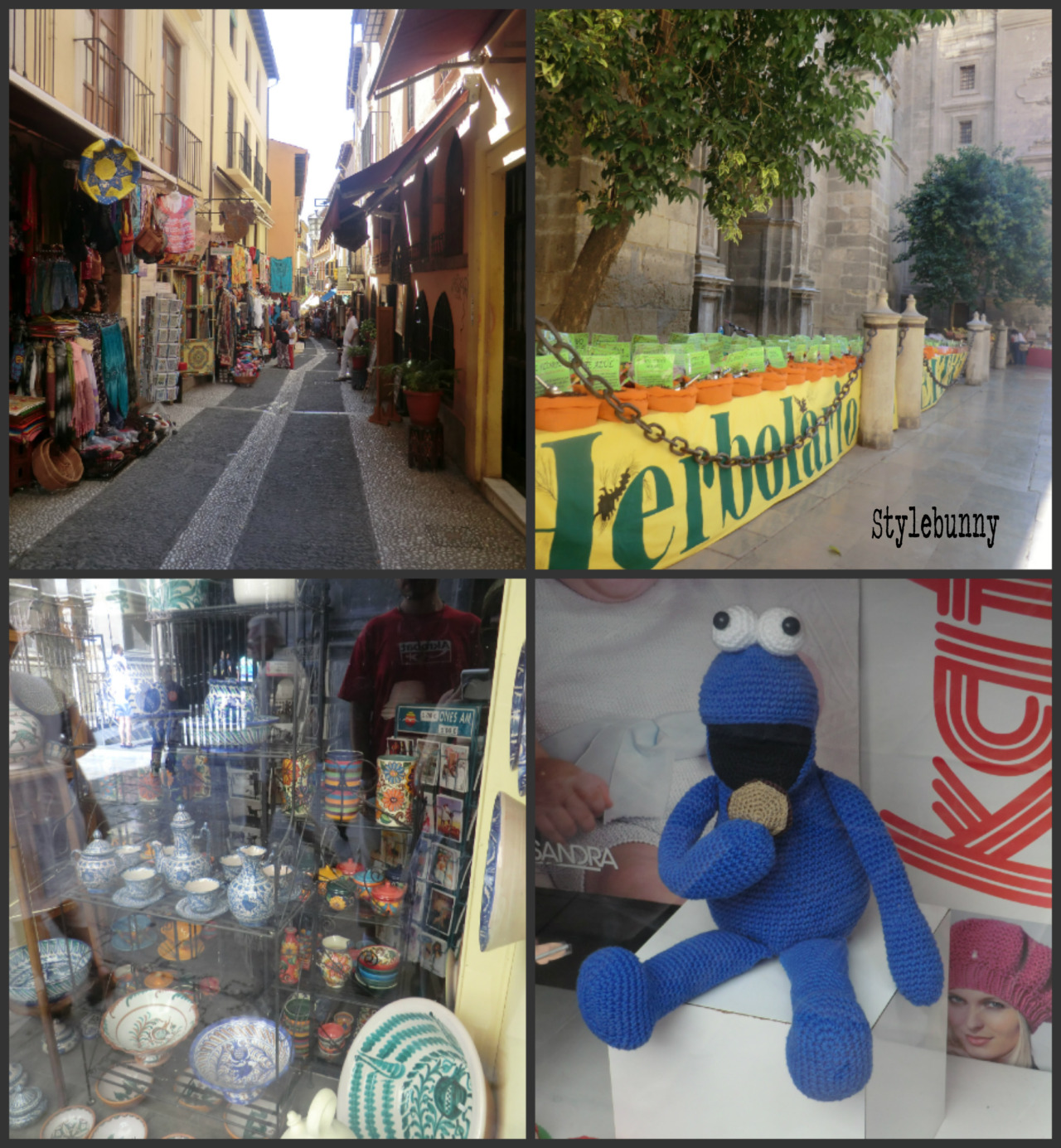
Dopo pranzo ci dirigiamo verso la cattedrale attraversando il mercato dell'Alcaìceria. E' una stretta via piena di negozietti che ricorda un bazar. La merce strizza parecchio l'occhio alla comunità hippie, ci sono tantissime cose che mi piacciono, ma nessun cartellino del prezzo e non oso chiedere. Proseguendo notiamo anche molte bancarelle e negozi che vendono spezie, infusi e tè di vario tipo, oltre a negozi che vendono le tipiche ceramiche locali, dipinte a spesse pennellate brillanti.
After lunch we head towards the cathedral through the Alcaìceria market. It's a narrow street full of shops reminiscent of a bazaar. The goods winks the eye to the hippie community, there are many things that I like, but no price tag and I don't dare to ask. Continuing we also see many stalls and shops selling spices, infusions and various kinds of tea, as well as shops selling typical local pottery,painted in brilliant thick strokes.
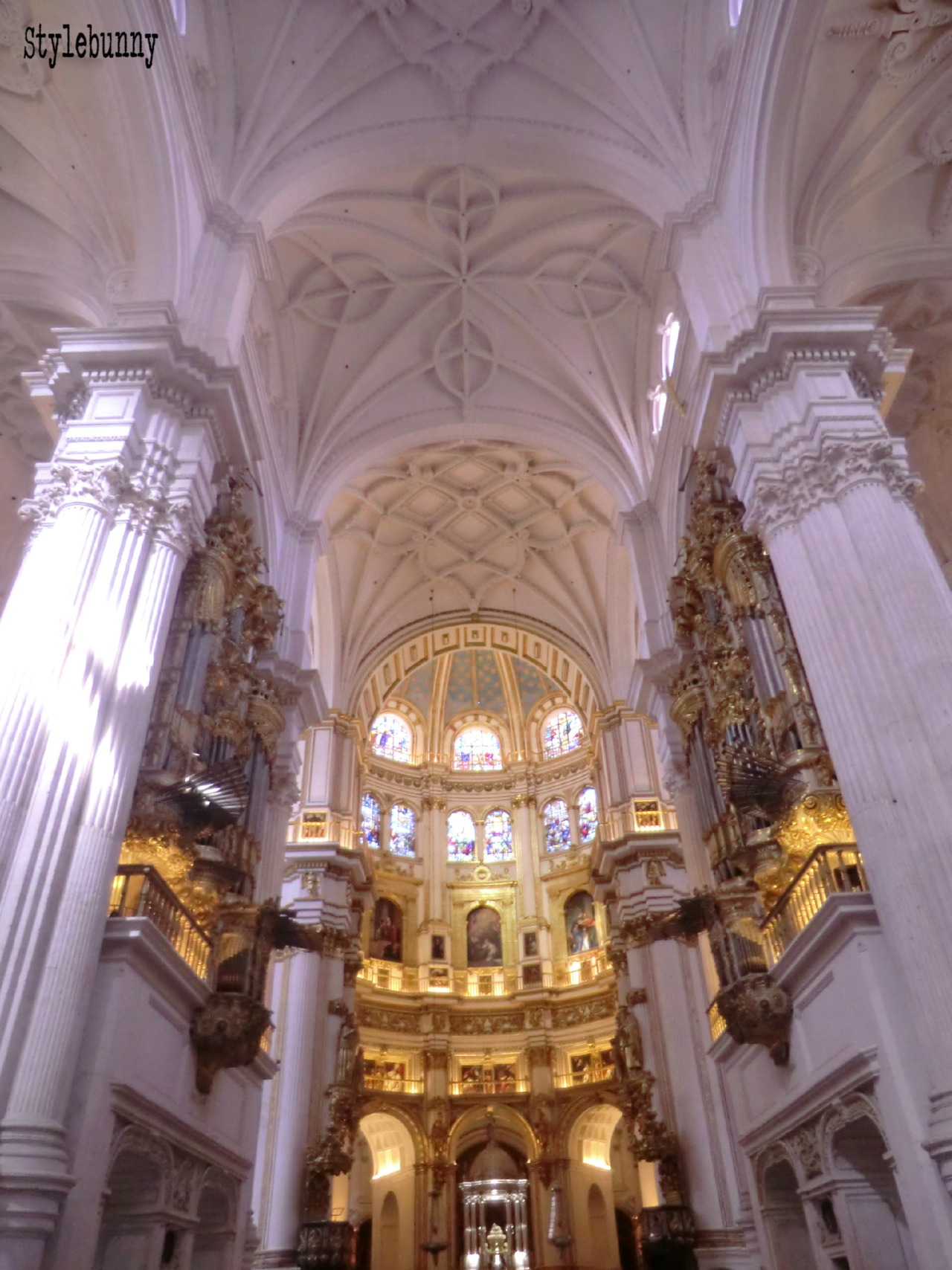
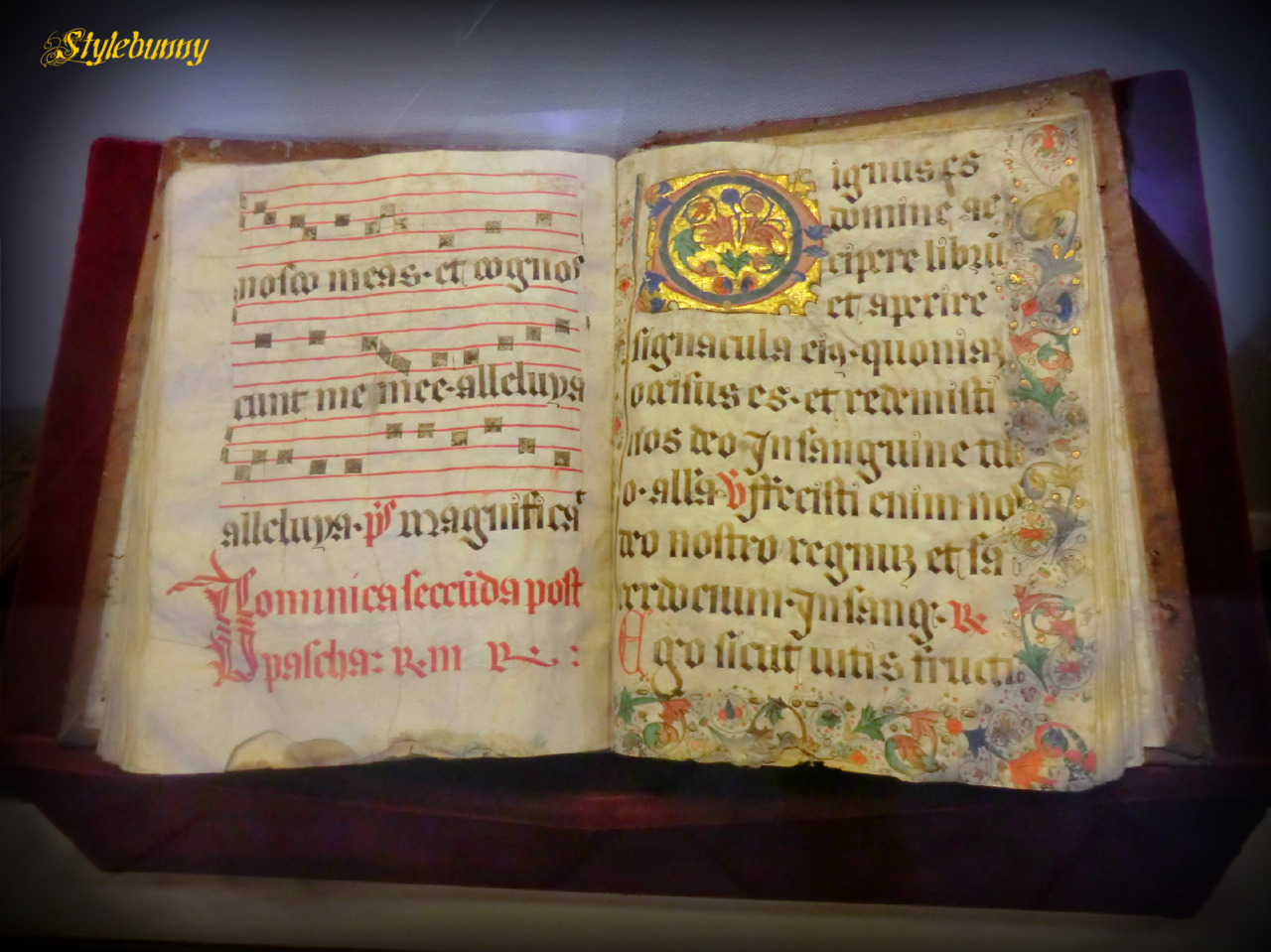
La cattedrale rinascimentale, costruita a inizio 1500 dal famoso architetto Diego de Siloe, da fuori non sembra niente di che, ma dentro è veramente imponente. Ci si sente schiacciati dalla grandezza dell'edificio. Sulle linee rinascimentali si sono poi innestati ornamenti barocchi, soprattutto per quanto riguarda le cappelle e i due splendidi organi gemelli.
Quello che mi è piaciuto di più però sono stati gli enormi messali con le musiche e i canti sacri dell'epoca.
Annessa alla cattedrale, che si visita a pagamento, c'è la cappella dei re cattolici, dove si trovano le tombe di Isabella e Ferdinando, di Giovanna la pazza e Filippo il bello, visitabile con ingresso e pagamento separati. Mi era stata consigliata per i quadri presenti nella collezione di Isabella, fra cui figura un Botticelli. Nonostante ci siano varie opere di pregio, il Botticelli, peraltro di incerta attribuzione, non mi piace. Apprezzo la complicatissima cancellata, i messali, i gioielli e un paio di quadri di Van der Weyden, ma a posteriori non l'avrei visitata.
Ammetto che -stupidamente, visto che è lo scopo della cappella- mi dà fastidio la glorificazione di persone che, oltre a unificare la Spagna e finanziare la spedizione di Colombo, hanno attivamente perseguitato mori ed ebrei spagnoli, con conversioni forzate e l'espulsione di questi ultimi dal paese.
The Renaissance cathedral, built at the beginning of 1500 by the famous architect Diego de Siloe, from the outside looks nothing like that, but inside is really impressive. We feel crushed by the size of the building. On the lines of the Renaissance were added baroque ornaments, especially regard the chapels and the wo beautiful twin organs.
What I liked most, however, were the enormous missals with the sacred music and songs of the time.
Next to the cathedral, with a separate entry and payment, there is the chapel of the Catholic Kings, where are the tombs of Isabella and Ferdinand, of Juana la Loca and Philip the Handsome. It was recommended to me for the paintings from the collection of Isabella, including a Botticelli. Although there are several valuable works, I do not like the Botticelli, which is also of uncertain author. I appreciate the complicated grating, the missals, jewelry and a pair of paintings by Van der Weyden, but in retrospect I would not have visited it.
I admit that-stupidly, since it is the purpose of the chapel- the glorification of people who, in addition to unify Spain and finance the expedition of Columbus, have actively persecuted Moors and Spanish Jews, with forced conversions and the expulsion of the latter from the country, bothers me.

Il negozio della cattedrale è molto divertente: vendono il profumo della cattedrale e, insieme a quelle del presepe, inquietanti statuine di incappucciati.
The shop of the cathedral is very funny: they sell the perfume of the cathedral and, together with those for nativity scenes, scary statues of hooded man.

Usciti dalla cappella facciamo un giro. Granada si prende molto sul serio come città dei melograni, tanto che appaiono su cartelli stradali, piastrelle, ecc...e perfino sui paletti stradali.
Vediamo l'università e qualche altro edificio interessante. Ci sono alberi di arance da cui i locali colgono i frutti. Stanchi, decidiamo di tornare a casa...e ci perdiamo miseramente.
Passiamo le ore successive a vagare fra le viuzze del nostro quartiere, in salita e in discesa, finché, dopo un po'che chiediamo indicazioni, riusciamo a ritrovare Plaza San Nicolas, il punto panoramico più famoso della città che è vicinissimo al nostro hotel.
Siamo spossati, per fortuna la nostra stanza è finalmente libera. Portiamo su i bagagli e ci prepariamo la prima e ultima pasta che mangeremo in Spagna. E' buonissima.
Leaving the chapel, we walk around the area. Granada takes itself very seriously as the city of pomegranates, that appear on road signs, tiles, etc... and even on street poles.
We see the university and some other interesting building. There are orange trees from which the local pick the fruits. Tired, we decide to go home...and we got miserably lost.
We spend the next few hours wandering in the narrow streets of our neighborhood, uphill and downhill, until, after we asked directions again and again, we find Plaza San Nicolas, the most famous scenic spot in the city which is very close to our hotel.
We are exhausted, luckily our room is finally free. We carry our luggage up the stairs and prepare the first and last pasta we will eat in Spain. It's very good.
Casa de Amigos
Si trova in una posizione magnifica, nel quartiere più tipico della città, l'Albayzin, ex quartiere moresco di viuzze e casette bianche e vicinissimo al più famoso punto panoramico della città, Plaza San Nicolas. Dalla casa durante il giorno si sentono spesso melodie tipiche.
La zona è molto turistica, ma frequentata anche da artisti locali, soprattutto hippie e gitani. L'atmosfera è molto rilassata.
La casa de Amigos è una tipica casetta bianca di cui il proprietario affitta le stanze. Ha un parcheggio gratuito vicinissimo. E' arredata in uno stile shabby etnico molto gradevole. Gli spazi comuni e le stanze sono abbastanza spaziosi. C'è un'unica doccia per tre camere, ma è pulita e non ho mai trovato coda. Purtroppo la porta non si chiude. La cucina è grande e pulita e c'è un intero armadio di spezie a disposizione dei visitatori. La camera doppia ha un bagno privato.
Non c'è l'ascensore e c'è una rampa di scale.
Una volta effettuato il check in si riceve un mazzo di chiavi per ingresso e camera e si può entrare e uscire a qualunque ora.
Il proprietario è gentile ed estremamente disponibile.
In casa è vietato fumare tabacco, ma permesso fumare marijuana. Non si accettano bambini e si richiede di pagare in contanti. Noi abbiamo speso meno di 25€ a notte per la doppia con bagno e ci siamo trovati benissimo, è stata la sistemazione che abbiamo preferito in tutto il viaggio.
It is in a magnificent location, in the most typical neighborhood of the city, the Albayzin, former Moorish quarter of narrow streets and white houses, and close to the most famous scenic spot of the city, Plaza San Nicolas. From the house during the day you can often feel melodies.
The area is very touristy, but also frequented by local artists, especially hippies and gypsies. The atmosphere is very relaxed.
Casa de Amigos is located in a typical white house where the owner rents rooms. It has a free parking near. It 'decorated in a very pleasant shabby ethnic style. The common areas and the rooms are quite spacious. There is only one shower for three rooms, but it is clean and I never found queques. Unfortunately, the door doesn't close. The kitchen is large and clean and there is a whole wardrobe of spices available to visitors. The double room has a private bathroom.
There isn't an elevator and there is a flight of stairs.
Once you check in you will receive a set of keys for the main door and your room and you can come and go at any time.
The owner is friendly and extremely helpful.
Tobacco smoking is not permitted in the house, but marijuana is allowed. They do not accept children and ask to pay in cash. We spent less than 25€ per night for a double room with bathroom and we had a great time, it was the accommodation that we preferred throughout the trip.









8 commenti:
Stupenda! Non ci sono mai stata, devo rimediare.
Le statuine incappucciate sono ben strane. Chissà che significato hanno.
L'Alcazaba è stupenda!
.. è incredibile come in ogni spostamento ci sia una mirabolante avventura! xD
Casa de Amigos mi piace, ha un qualcosa di accogliente.. esalazioni fumogene a parte! :p
PS: io amo i melograni, in questi giorni ne sto facendo una paurosa/preoccupante scorpacciata!
@Ciccola: assolutamente, vacci, vacci!!!
Credo che gli incappucciati si riferiscano a qualche processione, però considerato il passato a colpi di santa inquisizione...
@Nyu: sì, io sono particolarmente "fortunata", qualcosa con me succede sempre.
Noi quel posto l'abbiamo adorato!
Io invece non li adoro, ma i miei sì ^^
Wow che avventura, devo rileggermi con calma le puntate precedenti. Molto carino l'appartamento. Be' se la marijuana causa gentilezza la dovrebbero consigliare a tutti, c'è molta carenza XD
La cattedrale è molto bella
@Muriomu: :D
Infatti, soprattutto qui a milano c'è tanta gente che dovrebbe rilassarsi un po'.
Granada è una città davvero meravigliosa, noi ci siamo stati solo un giorno ma è davvero un gioiello (un giorno in cui siamo partiti dal campeggio all'alba, visto che non avevamo prenotato i biglietti per l'Alhambra e rischiavamo di non entrare - opzione da me non contemplata, per cui ho tirato giù tutti dai materassini prestissimo) ^^
Che bella città! Chissà che anche io, un giorno, non riesca ad andarci!
@Acalia: per fortuna che c'eri tu a fare il general maggiore, andare a Granada senza vedere l'Alhambra sarebbe stato un peccato!
@Scarabocchio: spero di sì!!
Posta un commento